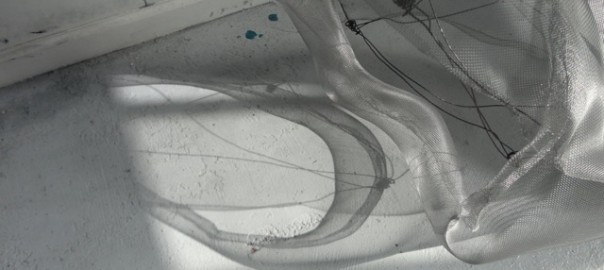I am looking at the Analytical Table of Contents of Opticks. I was attempting to page past it, but this Table of Contents is the notes format of the book, wherein Newton even describes the positioning and shapes of the lenses, and the light beam, everything accounted for.
I was looking for the beginning of Newton’s own voice, for Opticks, past all the commentary, as if no mortal could possibly just begin to read the notes of this curious, clear explorer. Even Einstein’s notes are notes, talk about needing a Sherpa through the work. I saw it when I was reading in the contents how to position two lenses, how perhaps another explorer would begin by setting the lenses like so, but that I am interested in the experience of the discoverer, standing in the dark room, letting in one shaft of light and wondering into it – a way to understand light, perhaps sight, perhaps vision, but stand in the dark room with the disappearing shaft of light (because it’s the sun or bust for Newton) and quick think of what to do to understand. I want to know what Newton does with that moment. I am flipping for the beginning to find where Newton begins so I can see which he is even considering. Has he captured the light in order to examine his optics, or is he using the optics to understand the light? Obviously the work is called Opticks. In fact, it’s Opticks or, a Treatise of… Light. That’s the title. That way of not quite being able to choose between the two natures, i.e. wave, particle; dream, wake; chicken, egg; Opticks, Light; that dynamic manifests like a mineral stripe in all the loveliest considerations. Such as what the work is about in Newton’s own mind.
I wonder what kind of optical properties his late 1600’s Italian glass had. To what extent did Newton have an eye out for surprise, the unexpected, what was better for Newton… when the thing went as planned, or when a new unexpected thing showed up? I am not ready to say he loved best to know the answer in advance merely because he was an ace hypothesizer and excellent recorder.
I find Newton’s first statement of the book part of Opticks. ‘…explain the properties of Light’ that’s the mission. My own interest is really in vision as a form of perception, light being essential to vision, we won’t be seeing something light doesn’t do. the way it moves, the way it behaves is the foundation of visual perception. Fingers in the Eye or not. kNew-ton.
Newton decided to know about light through Opticks, optics, so, you know, optics will be limited to describing certain behaviors of light, but not all possible behaviors of it. all to say, do not let mind form a tight seal around the parameters of any one investigation.
and later by 250 years, will come Buckminster, my simultaneous read, to point out the six count ’em, six, and that’s twelve with their anti-selves, six “economical vectors, so there are six positive, six negative, equally economical options at every event.”
… a key, the simple little key to one’s own mind. ‘key is a tricky word, isn’t it,’ I write in imaginarily descending fonts until the final ‘t’ is barely visible. I wouldn’t want to assign all the other qualities of Key to a mental vantage point, a perspective, a lens, the eye – the eye makes the picture…. mm, I say, always to myself, as if I am saving all the words, letter by letter, for later. I see Newton’s lovely little perspectival eye, the blooming V for Vision, the look of looking. The lens, the creative eye, the eye, I’m just saying, of Horus, because I have left myself messages everywhere, on currency and the wooden cabinet in my dining room, the eye, Georges Bataille, too, and the All-Seeing Eye of the fortune teller. Newton, not only concerned with what ties us and our apples to the ground, but already making note of the quantum with the drawn eyeball of Opticks.
The bubbles in the lightshadow, give me the words, I claw toward the lightning sky, about how the photons make a ghostly other that is totally unpredicted in more commonly visible photon tricks, but I am paring down the light, so that I end up with a tightly baffled shaft of light, which I find later, were also Newton’s conditions for the Opticks experiments. I think I bought a Newton prism in my last Science surplus lens spree. I must snap right out of this sitting around, and right into the making of stuff before I have to admit that I’ve come down with a sitting and typing ailment. There are lenses and light and little drawings of eyeballs waiting to see whatever will happen when I create the baffled conditions. I sigh, does it have to be so pervasive?
I think of rooms famously altered with light and darkness, like the inside of Notre Dame

